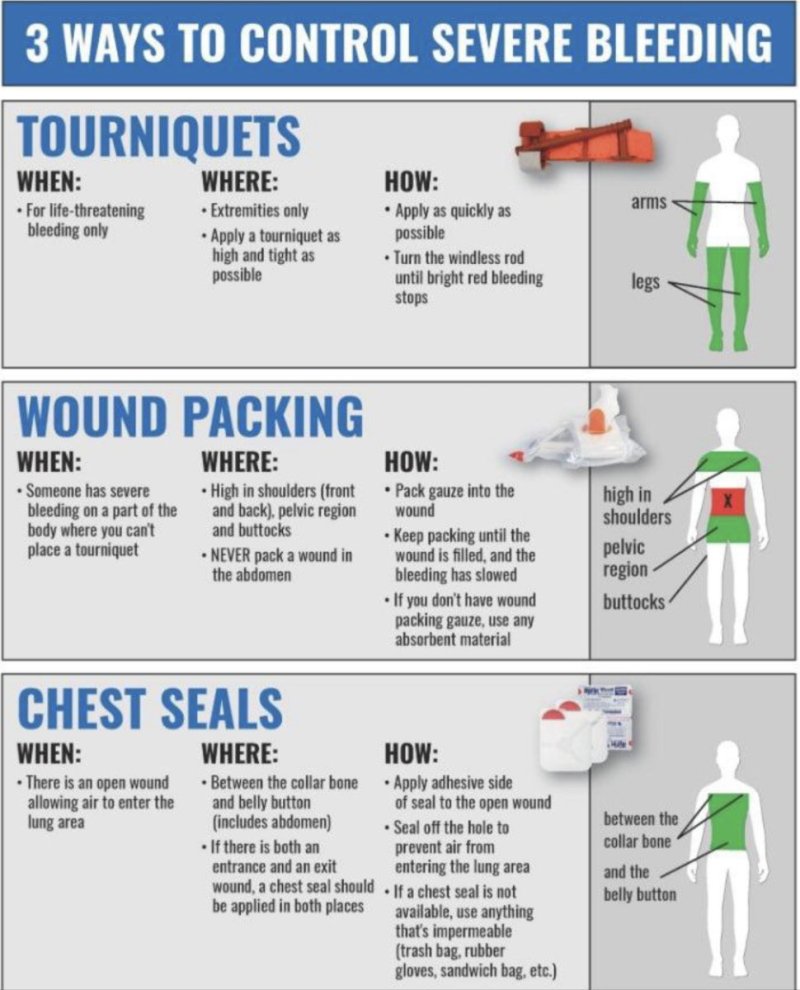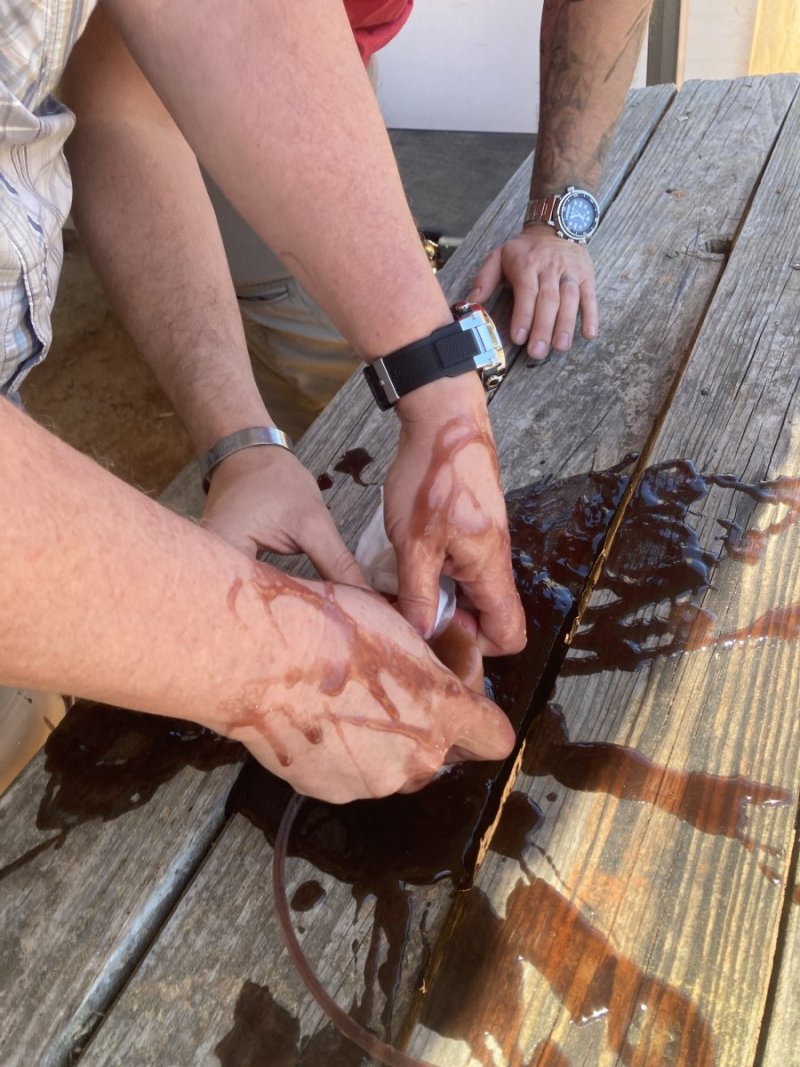…you can bleed out really quick and you can stop breathing real quick. Keep the red stuff in and keep the air moving. Tourniquets on the arms and legs, chest seals on the torso (collar bone to belly button) wound packing in the arm pits, neck and groin.
Assuming that most people don’t keep CAT tourniquets, chest seals and combat gauze with them, here’s some substitutes:
Tourniquet: hunting vest, strip of shirt or pants, weapon sling, cloth belt. Leather belts don’t work too well. Tie the material around the extremity high and tight and then put a stick, flashlight, etc. underneath it and twist it as tight as you can.
Chest seal: duct tape, shopping bag taped down, your hand. Just cover the hole and keep it sealed. And don’t forget the exit hole if there is one.
Gauze: literally any cloth. Your shirt, hunting vest, Chic-Fil-A napkins from your center console, etc. The goal isn’t to soak up the blood, it’s to apply pressure to the severed artery. So just jam something in there and hold pressure.
Assuming that most people don’t keep CAT tourniquets, chest seals and combat gauze with them, here’s some substitutes:
Tourniquet: hunting vest, strip of shirt or pants, weapon sling, cloth belt. Leather belts don’t work too well. Tie the material around the extremity high and tight and then put a stick, flashlight, etc. underneath it and twist it as tight as you can.
Chest seal: duct tape, shopping bag taped down, your hand. Just cover the hole and keep it sealed. And don’t forget the exit hole if there is one.
Gauze: literally any cloth. Your shirt, hunting vest, Chic-Fil-A napkins from your center console, etc. The goal isn’t to soak up the blood, it’s to apply pressure to the severed artery. So just jam something in there and hold pressure.






